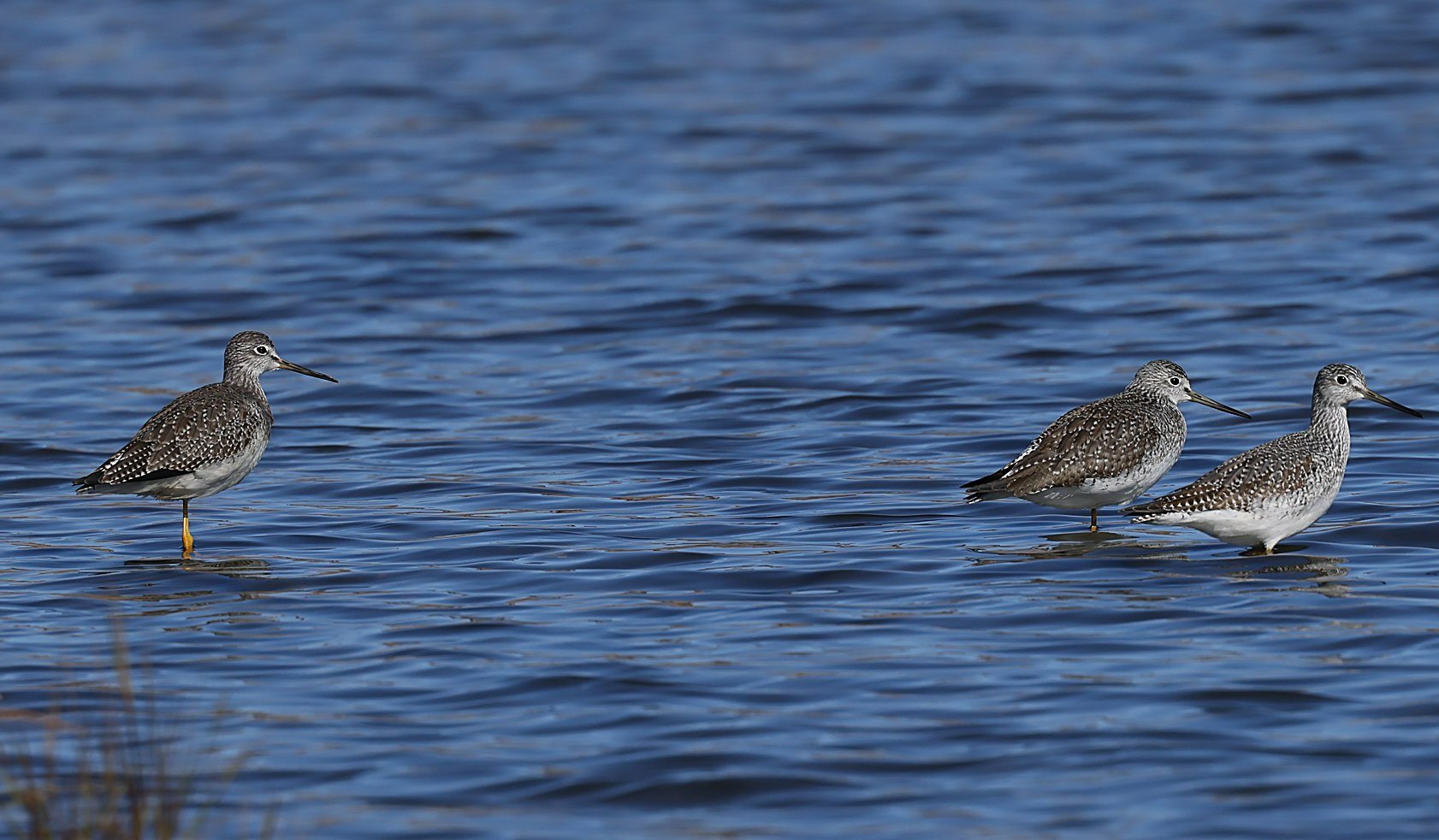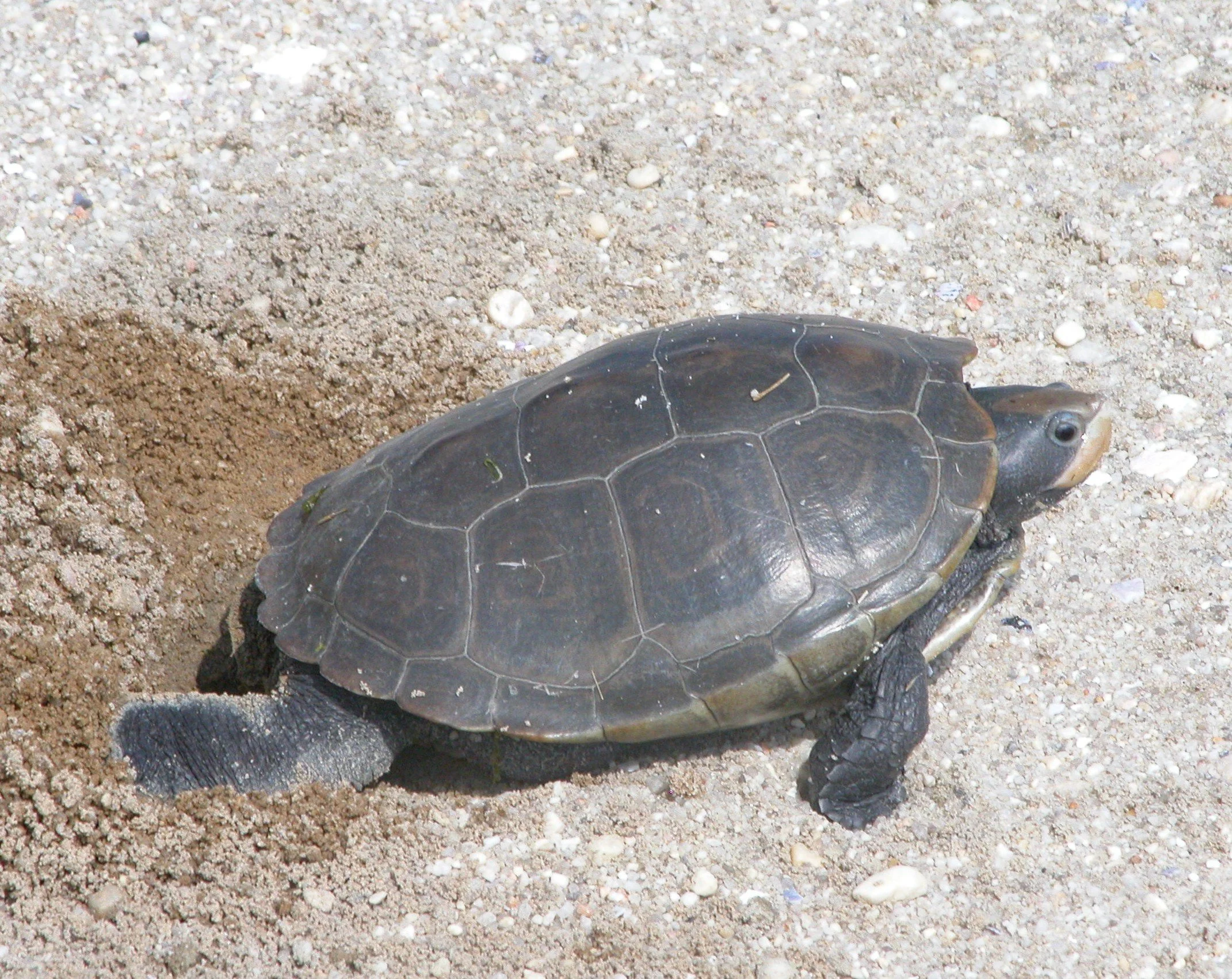
Barnegat Bay Habitat & Wildlife
Barnegat Bay is home to a diverse suite of organisms and rich coastal habitats, including a maritime forest, tidal creeks, salt marsh, freshwater ponds, brackish impoundment, and bayshore environments. The entire Bay is included in the U.S. Coastal Plain biodiversity hotspot, an area of high levels of biodiversity that have great need for protection from high threats of human impact.
Species Pages
Species Spotlight
Diamondback Terrapin (Malaclemys terrapin)
Malaclemys terrapin, commonly known as the diamondback terrapin, is the only turtle species in North America that can live their entire lives in brackish environments like those of Barnegat Bay estuary. They are more closely related to freshwater turtles than they are to sea turtles. Terrapins eat herbivorous snails. Kept unchecked, snail populations would increase and overgraze salt marsh grasses, leading to less oxygen-producing plants aboveground and more land erosion from the lack of plant roots belowground. Terrapins combat this by eating snails, keeping their population at a reasonable size. This makes diamondback terrapin is a keystone species of salt marsh habitats, meaning that their presence and activities keep the marsh ecosystem healthy and functioning.
Before European contact, terrapins were an important food source for Indigenous communities that lived in estuarine areas. Terrapins became an important food item for struggling American colonists and militia members in the 1700s and were later a major source of protein for slaves on tidewater plantations. From the late 1800s through the Great Depression, terrapins were highly sought after in the restaurant industry and were also a significant food source for people living in remote coastal settings. Similar to lobster, terrapins had gone from a food seen fit only for the desperate, impoverished, and enslaved, to a widely prized delicacy that people couldn’t get enough of. High demand for terrapins as a food item led to a population crash, in some places, completely wiping out populations on a local level. This led to the U.S. Federal Bureau of Fisheries to raise terrapins to restore wild populations and to supply commercial use. The demand for terrapins for culinary purposes curtailed during Prohibition as sherry wine, a crucial ingredient for making turtle soup, became hard to legally come by.
Current threats to terrapins come in the form of habitat loss, degradation and fragmentation due to shoreline erosion and land development, road and boating mortality, global warming and climate change, and crabbing bycatch mortality.
Here are some ways you can help wild diamondback terrapins:
• If you like crabbing, make sure your crab pots have bycatch reduction devices
• If you see a terrapin crossing a road, help it!
• If you go boating, be careful around marsh systems and avoid submerged aquatic vegetation beds
• Do not take terrapins from the wild
• Do not support the online turtle trade industry
• If you live in an area with terrapins, consider installing a turtle garden to provide nesting habitat
Photos courtesy of Project Terrapin



